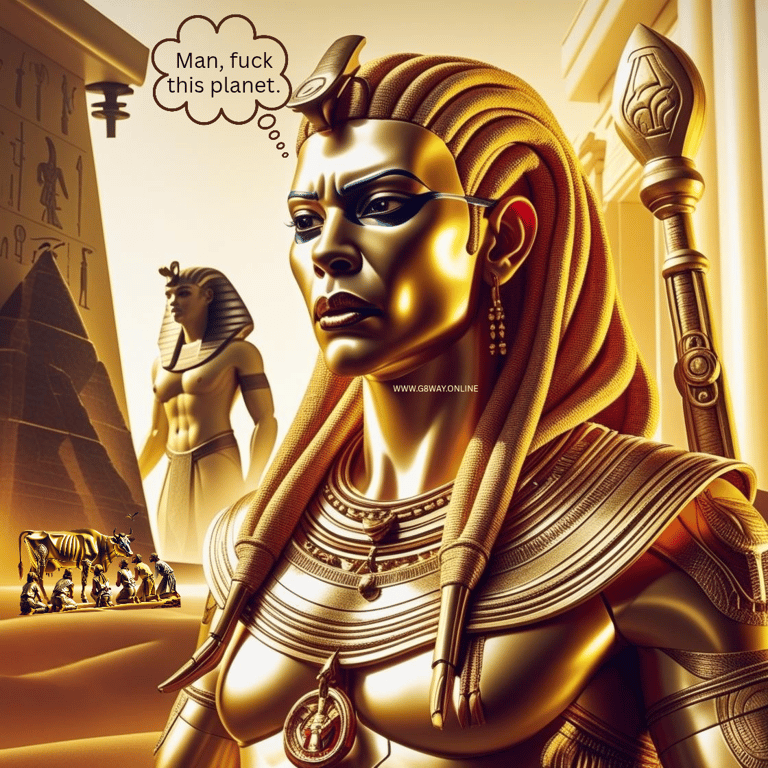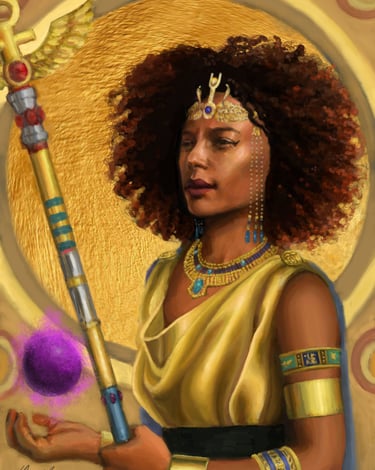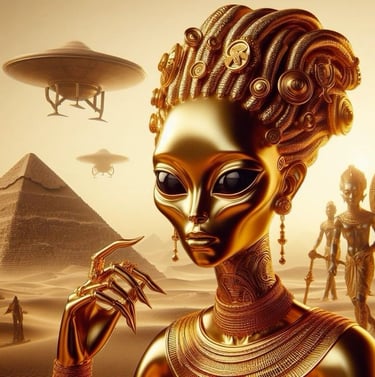

Who, what where and why!!!!!! Why did we stray so far from the most cosmically connective mojo mankind has ever known? Where did we go wrong and who the fuck is responsible for initially hiding those wonderfully magical attributes that are now buried deep within our suppressed pineal psyches! It's torturous knowing we are (two) 200% capable of utter greatness from this extraordinary power that's tightly woven into our DNA but we've been rendered useless and it's so damn infuriating!
Ancient Egyptian Sorcery and Archaic Scientific Ingenuity
The allure of Ancient Egypt has fascinated humankind for centuries. With its towering pyramids, majestic pharaohs in elaborate palaces and the enigmatic hieroglyphs, make up just some of what this ancient civilization was. In its grandeur, ancient Egypt was not just a cradle of culture but also a hotbed of sorcery and scientific ingenuity. But what exactly was the magic that thrived in this era? Why do we feel that such powers have been lost to us? These questions delve into the heart of ancient Egyptian sorcery, revealing both the profound wisdom of their rituals and the unsettling notion that much of it has been buried, and neglected, and then purposefully hidden from modern consciousness! Just like the long-forgotten Book of Troth. More on that later...
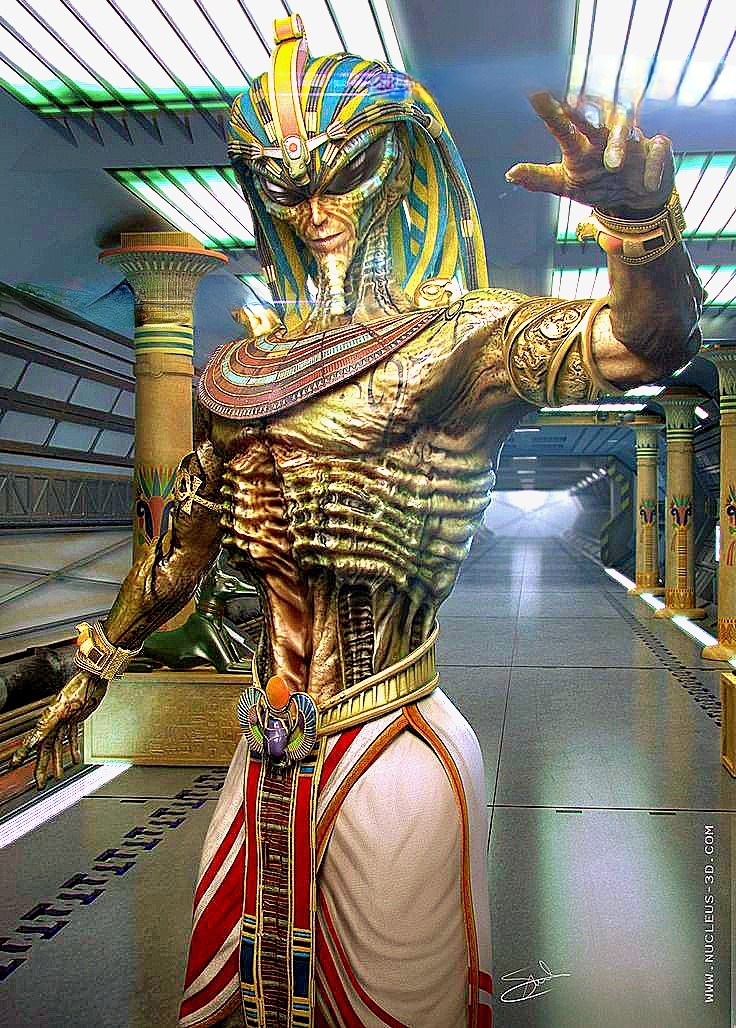

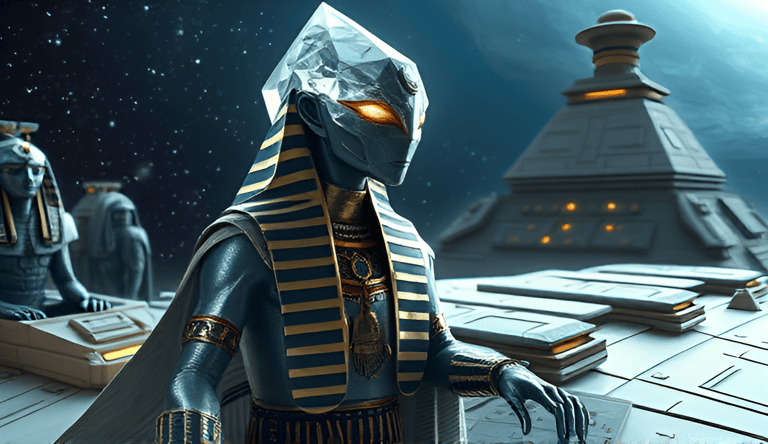

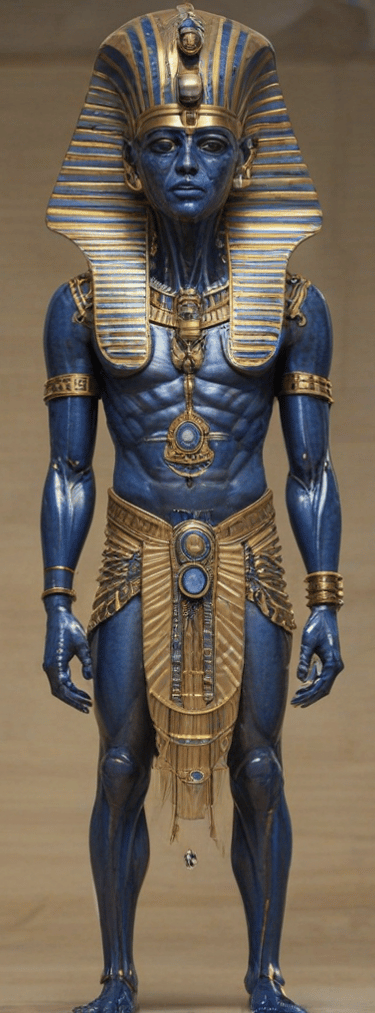

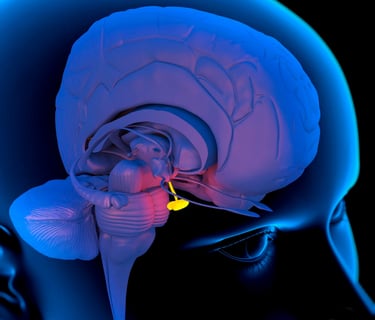

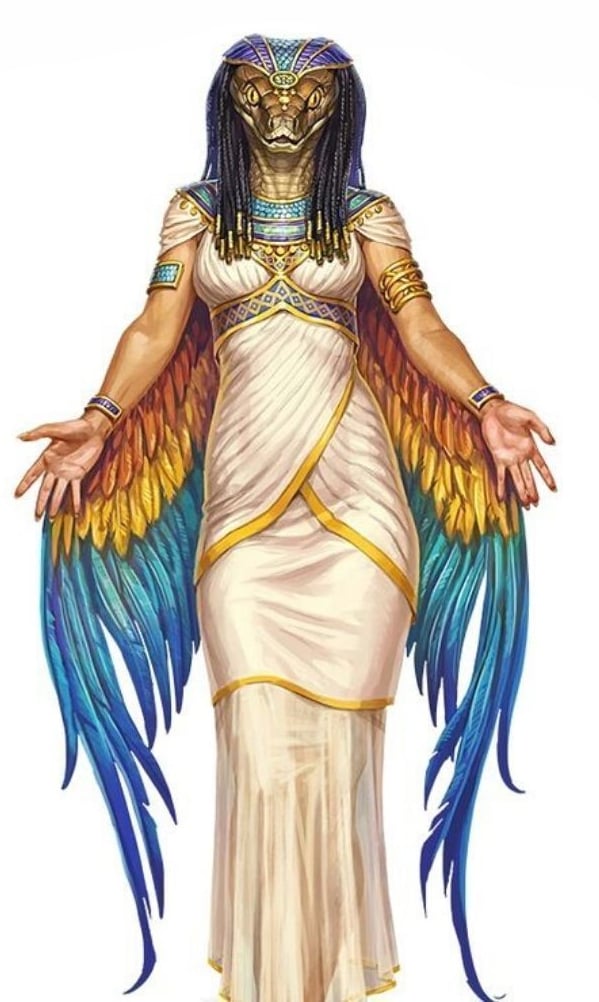

Perhaps All It Took Was a Century To "Learn to Forget"!
Were humans warned against using their pineals?! Firstly, it is essential to understand the anatomical and physiological significance of the pineal gland. This small, pea-shaped endocrine organ is situated deep within the brain and primarily produces melatonin, a hormone critical for regulating sleep-wake cycles. The production of melatonin is influenced by light exposure, showcasing the gland's connection to circadian rhythms. However, beyond its biological role, the pineal gland has been associated with metaphysical concepts across various traditions, particularly in ancient Egypt, where it was viewed as a conduit to higher consciousness and spiritual awakening.
The concept of calcification generally refers to the accumulation of calcium phosphate crystals in the pineal gland, which can occur due to factors such as environmental toxins, diet, certain medications and drug addiction. Scientific studies indicate that this calcification may correlate with reduced melatonin production, potentially impacting sleep quality and hormonal balance. Moreover, there is an ongoing discourse about how lifestyle factors—such as exposure to fluoride, processed foods, and decreased sunlight—just to name a few, can exacerbate calcification processes.
The Essence of Ancient Egyptian Magic
Try to set the thwarts and whitewashing aside and know the facts; at the core of Ancient Egyptian beliefs was the concept of Heka, often translated as "magic" but far more nuanced than the word implies. Heka was understood as a fundamental force that structured the universe, bridging the gap between the divine and the human experience. This cosmic energy was accessible to those who understood how to harness it, allowing practitioners such as priests and sorceresses to manipulate energies through rituals, spells, and talismans.
The ancient Egyptians recognized that their connection to the spiritual world was an essential part of life. Rituals often involved invoking deities, with Isis, the goddess of magic and healing, standing out as a primary figure. Her teachings were believed to offer protection, fertility, and wisdom. The magical practices of ancient Egyptians were not merely superstitions; they contained elements of early scientific thought, intertwining observation of natural phenomena with spiritual pursuit. Which brings us back to Heka. Heka was (and still is) the lifeblood and embodiment of magic itself in ancient Egyptian cosmology. Far from being seen as a supernatural crutch or occult practice, Heka was a primordial force—one that existed before any god and played a central role in the creation of the universe. According to ancient Egyptian belief, Heka was the life-force that enabled the gods to perform their divine functions and allowed humans to access the sacred power woven into the fabric of existence. It permeated all things, acting as the invisible current through which divine order (ma'at) was maintained. As both a god and a cosmic principle, Heka was foundational to medicine, ritual, and speech—tools that activate all magical energy. Seen in some esoteric traditions and interpretations like those explored in other G8way.online blogs, primarily the article entitled "The Speculative Account of Mother Goddess, Ki" https://www.g8way.online/speculative-account-on-mother-goddess-ki-and-the-hybrid-takeover-meltdown-and-total-destruction-of-the-anunnaki
the use of Heka may even be understood as a bridge between physical and metaphysical realms, hinting at a universal intelligence or force possibly known and used by entities or beings predating dynastic Egypt.
However, the historical record offers little insight into the spiritual developments that preceded this era of well-documented worship. Scholars often ponder the origins of these religious practices, leading to speculative theories that suggest the influence of otherworldly beings aiding humanity in its early formation. This conjecture posits that before the structured pantheon known to us today, advanced supernatural entities may have interacted with humans, imparting knowledge and guidance. Such beings might have been responsible for the initial establishment of social orders and cultural practices, laying the groundwork for the complex belief systems later observed in ancient Egypt and throughout the ages up until now. At the present we're at the mercy of "scholars" and political interference since we've been left to fend for ourselves and it's not going so well, imo...
The abrupt departure of these advanced beings, (if they indeed existed,) raises intriguing questions about the continuity of human civilization and the transmission of knowledge. Contemporary archaeological findings and ancient texts hint at lost civilizations and technologies that could have facilitated such interactions. Theories suggest that these beings abandoned humanity due to unforeseen circumstances or perhaps a disillusionment with mankind's capacity for development or maybe even dissatisfaction with the inevitable unfavorable outcomes that occur era after era. We're going to have to reluctantly make peace with the fact that these topics will remain as known unknowns. The gap in recorded history forces us to confront the limitations of our understanding while opening avenues for speculation about humanity's formative experiences. Thus, the worship of Amun-Ra, Osiris, and Isis not only reflects an evolved spiritual landscape but also serves as a reminder of humanity's ongoing quest for meaning amidst the enigmatic shadows of its past.
Rediscovering Our Cosmic Connection
In today's fast-paced, technology-driven world, many are beginning to awaken to the idea that the ancient wisdom of civilizations like Egypt holds valuable insights for modern life. The idea that we possess innate abilities — often suppressed or forgotten — taps into a growing collective yearning for reconnection with the cosmic energies of our ancestors.
Scholars and practitioners alike are rekindling the study of ancient texts and artifacts, gradually piecing together a tapestry of knowledge that was nearly lost. Modern interpretations of Heka emphasize personal empowerment, encouraging individuals to take back the magical attributes that are rightfully theirs. There is a burgeoning movement that seeks to blend ancient practices with contemporary understanding, offering pathways to unlock the inner potential that many feel is lying dormant.
Engaging with this rediscovered heritage invites us to explore our identities as beings resonating with the universe's sacred vibrations. Practices such as meditation, ritual work, and even the study of astrology can open doors to insights about ourselves that echo the ancient Egyptians’ understanding of the cosmos.
Conclusion: A Call to Action
As we stand on the precipice of rediscovering our potential as humans, it is vital to confront the history of our estrangement from the cosmic forces that ancient Egyptian sorcery so eloquently embodied. The responsibility lies with us to peel back the layers of centuries-old suppression and misinformation, reclaiming the lost powers and wisdom that are our birthright.
By embracing the complexity and beauty of our ancestral knowledge, we can begin to weave the intricate threads of ancient Egyptian magic back into the very fabric of our lives. So let us ask ourselves, why should we not seek the extraordinary greatness that awaits within us? In doing so, we honor not just our past but also pave the way for a future where magic and science unite harmoniously, illuminating the path toward a transformed understanding of our existence.
The Veil of Suppression
As societies evolved, the rise of dogmatic beliefs led to the suppression of many ancient practices. The origins of this separation are complex, involving theological shifts, political power struggles, and cultural transformations. When monotheistic religions began to dominate, they often dismissed the polytheistic traditions, casting magic and those who practiced it into the shadows. This historical shift not only marginalized ancient practices but also severed our access to the wisdom embedded within them.
Moreover, fear of the unknown played a significant role in this suppression. The loss of the connection to the sacred nature of existence has rendered many people ignorant of their own potential. It’s a bit torturous to reckon with how humanity, by rejecting its roots, relinquished access to potent energies and psychic capabilities intricately woven into our very DNA.
